
Key Points
- S&P 500 Breaks a Key Level
- Small Caps Remain in the Range
- NASDAQ 100 Shines, Faces a Key Test Now
- Commodities Continues to Pause, Ready to Move Higher?
- Sentiment is No Longer a Tailwind
Mid-Week Market Update – United States
The S&P 500 has retaken the 100-day moving average, above the 50-day moving average, while closing above the interim February highs. The recent advance from support at 4,200 has now broken the series of lower highs that began with the January peak. Holding above 4,550 increases the odds that highs will be attacked. A move below points to the current strength being a bear market rally.
The 14-day RSI continues to move higher as it tries to shift to a bullish regime.
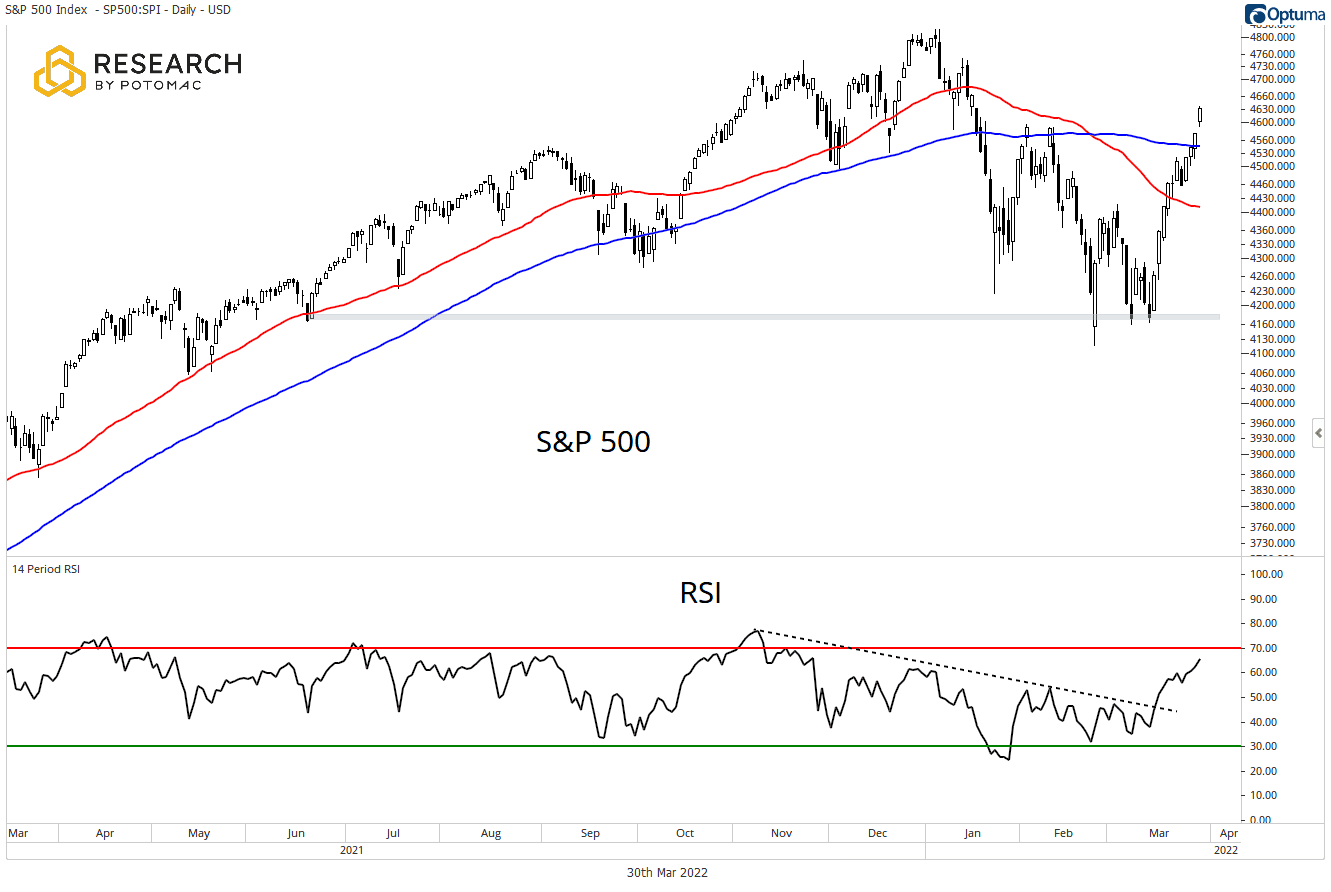
The S&P Small Cap 600 has also continued higher, moving through the 100-day moving average above the 50-day moving average. The index remains in the consolidation that has been in place for more than a year, keeping the trend in a neutral position. The 14-day RSI is moving higher and trying to break out of a bearish regime.
Despite the recent strength in the Small Cap Index, it has not kept pace with its larger peers. The relative ratio has moved below the 50-day moving average after failing to breakout.
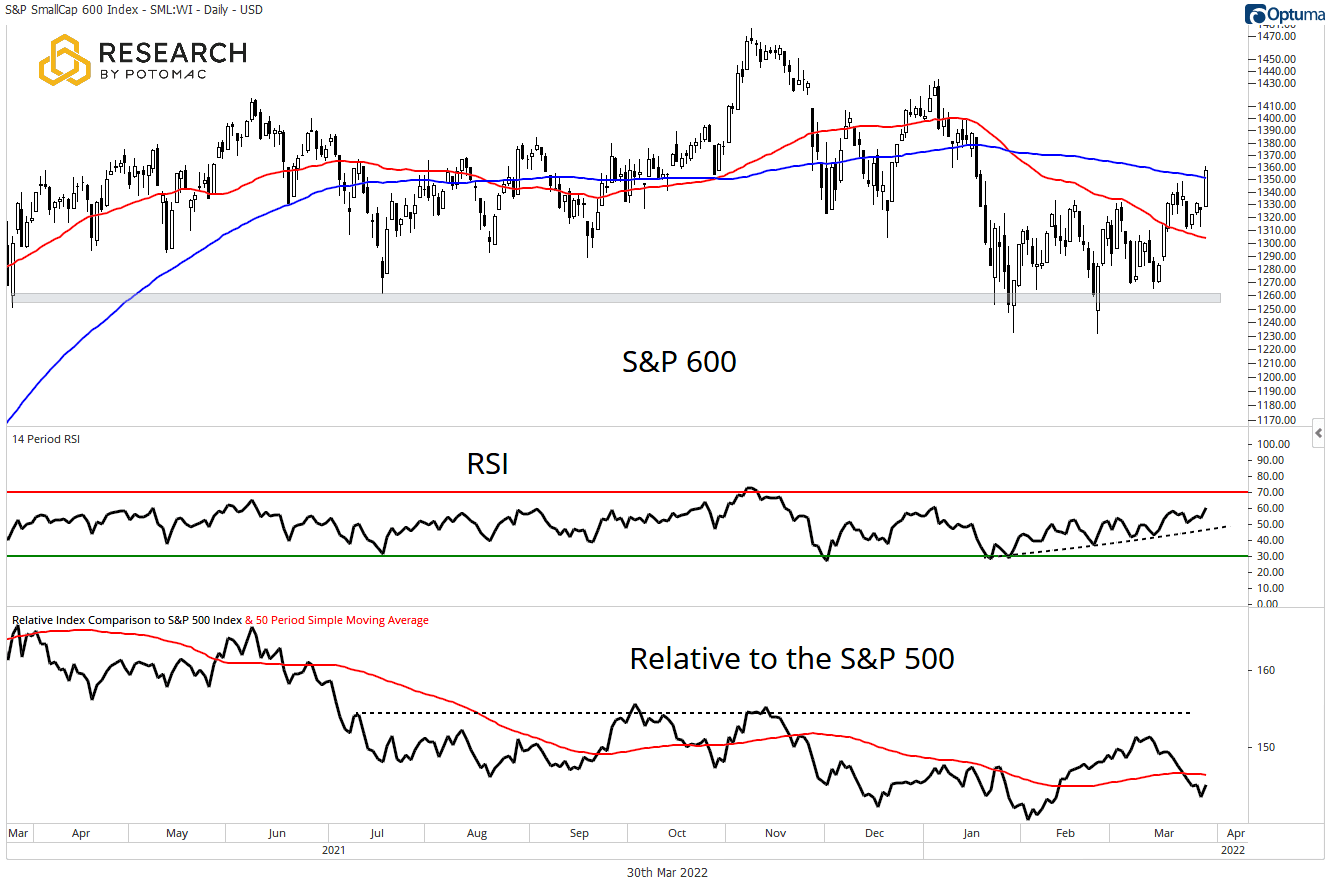
The NASDAQ 100 has been the star of the show during the March rally. The index is now set to do battle with the declining 100-day moving average, which is above the 50-day moving average. The 14-day RSI is trying to break into a bullish regime, and bulls would welcome an overbought reading to signal that momentum is with the price trend. Breaking above 15,500 would signal that the bulls are in control.
The relative trend has also improved as the NASDAQ 100 has outpaced the S&P 500 during the rally. The ratio has closed above the 50-day moving average and has running room for resistance.
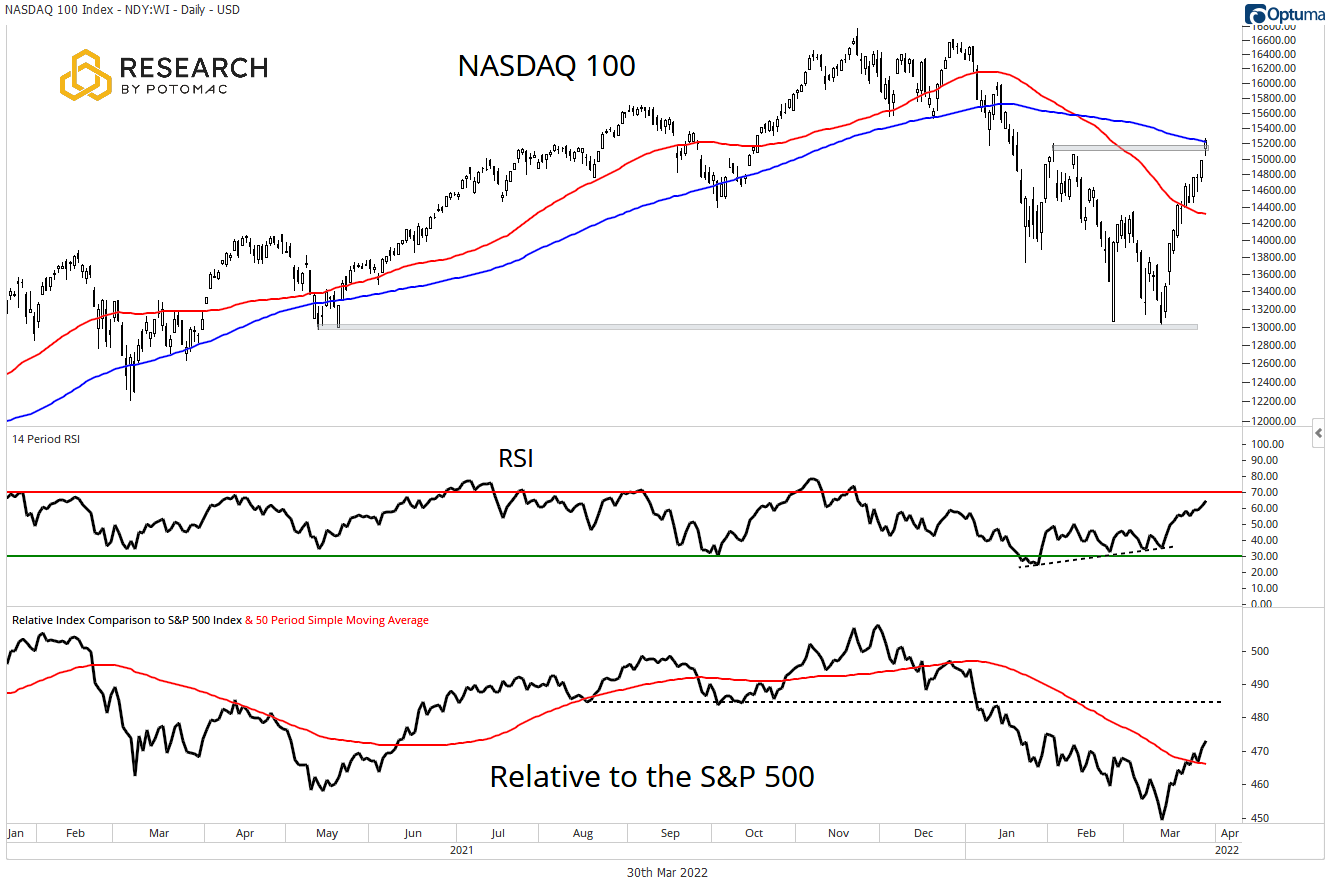
The freefall in the 10-Year Treasury Note has taken it further below the 50 and 100-day moving averages, pushing the RSI into an oversold position leading into this week. Trading over the past two days points to the possibility of a near-term rally, but it would take a break of the $125 level for Treasury bears to have a reason for concern.
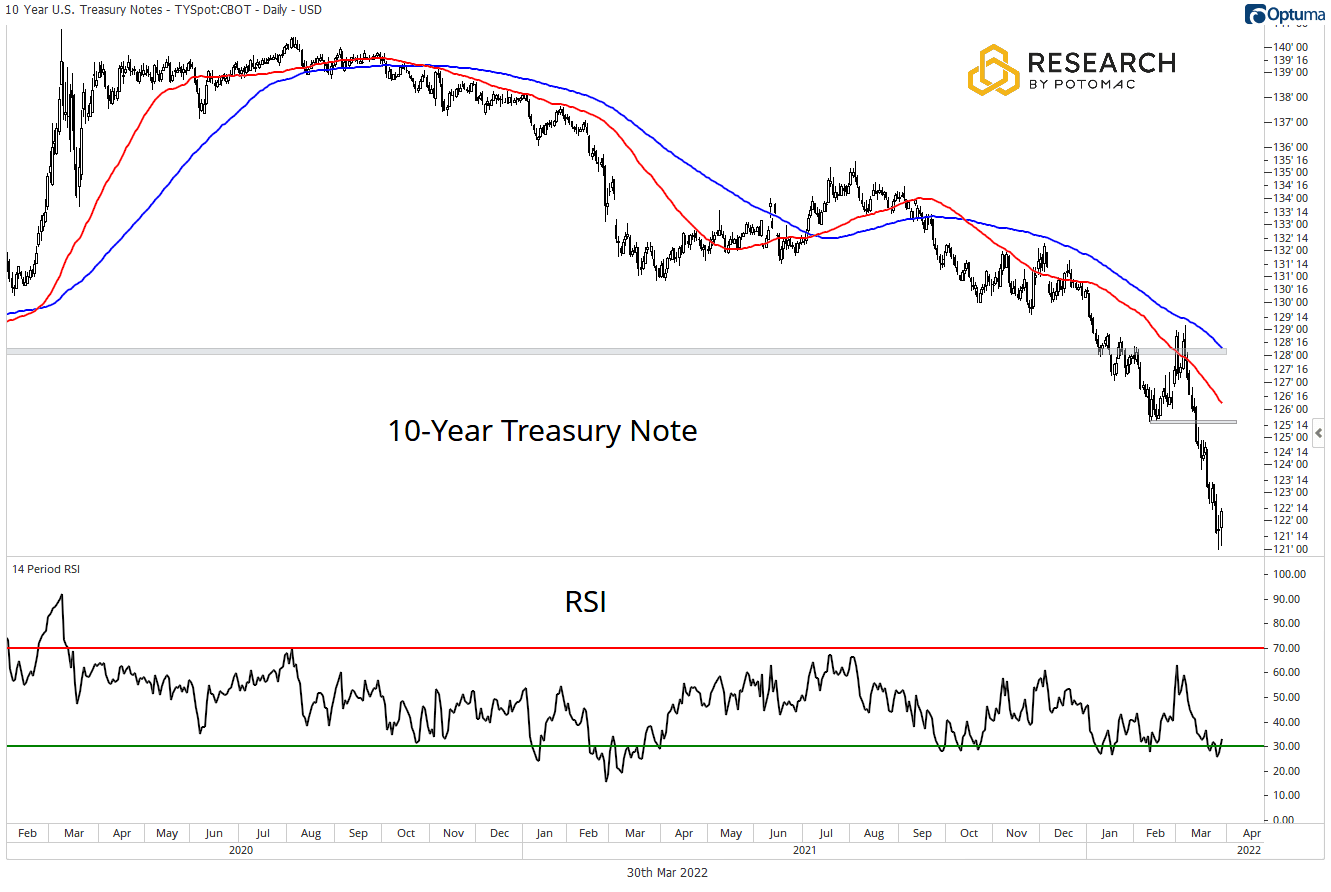
The Bloomberg Commodity Index continues to consolidate above the moving averages and near-term support after a strong run. The 14-day RSI continues to trade in a bullish regime after working off extremely overbought conditions. Above 120, there is an opportunity for the bulls to reassert control, continuing the uptrend.
The relative trend has pulled back to test the rising 50-day moving average. This is a logical spot for a reversal to the upside to take hold.
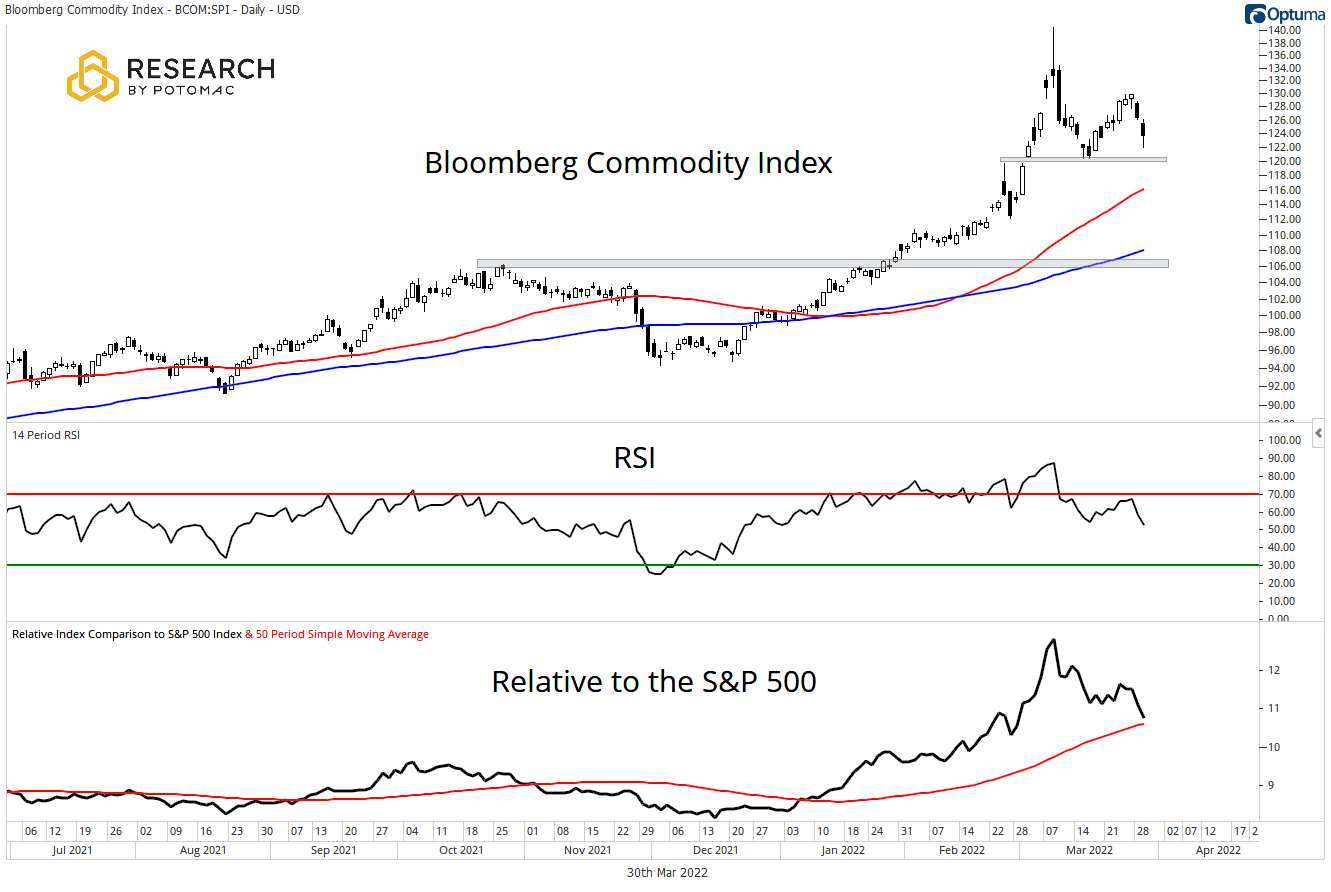
Sentiment Check
The CBOE S&P 500 Volatility Index (VIX) continues to move lower as equities rise. The 10-day moving average has made a lower low as the index moved below 20, also making a lower low. The rally in equities has done a good job of removing some of the fear that had built up in the market. The drawback for bulls is that sentiment can no longer be seen as proving a bullish tailwind.
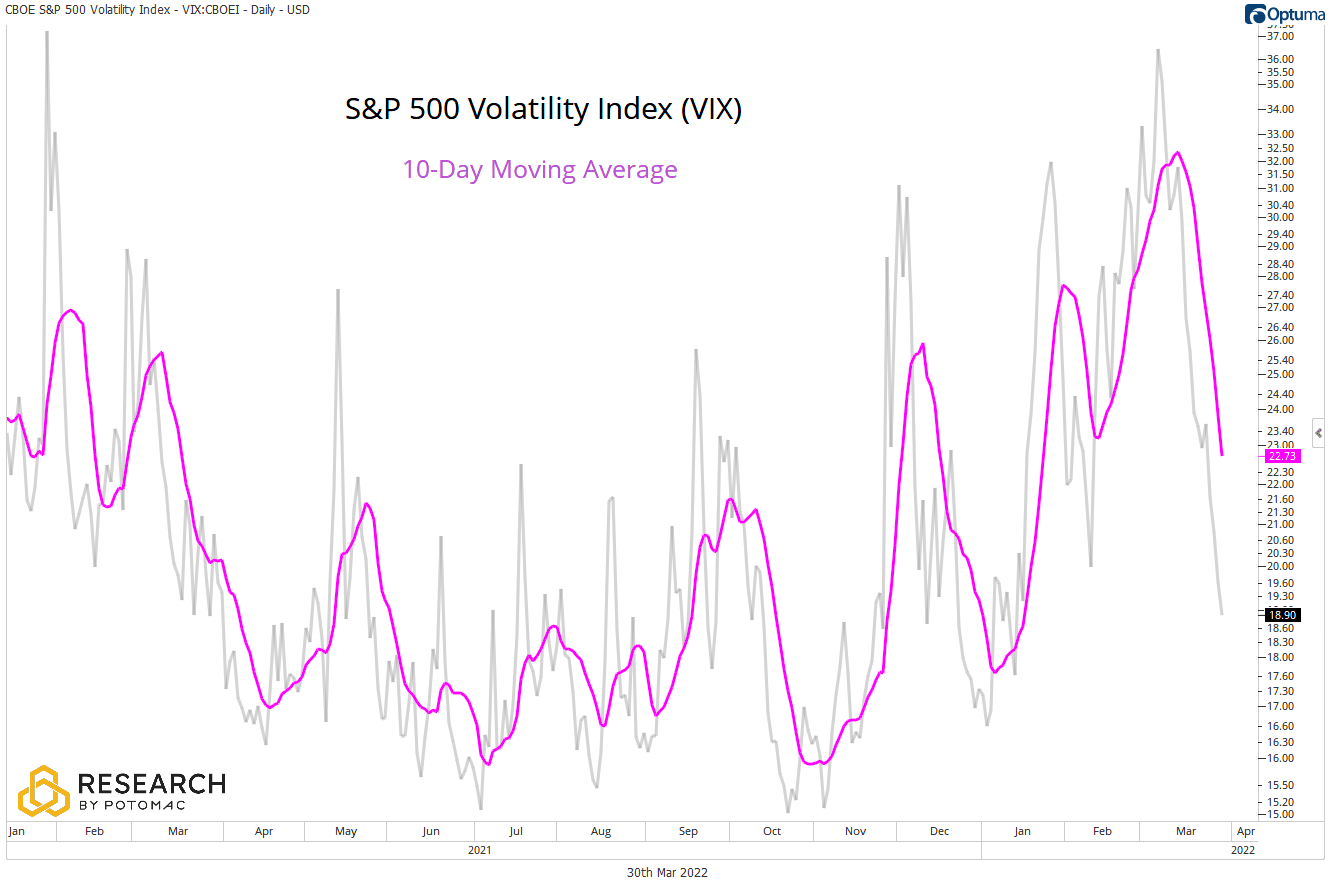
As the VIX Index falls, the VIX curve has normalized after becoming inverted earlier this month. This is another signal that overly bearish sentiment has been alleviated.
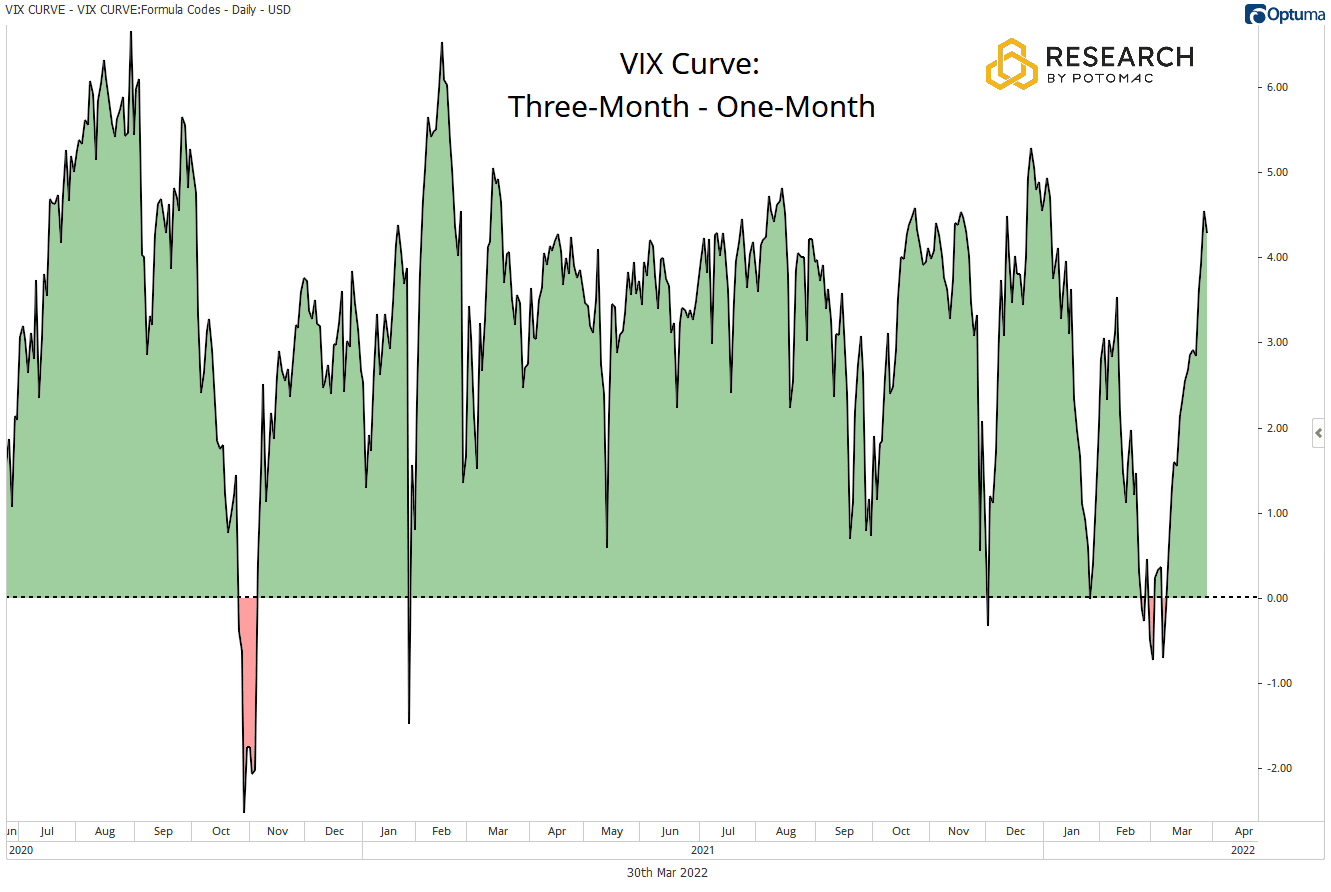
Take-Aways:
Equities in the U.S. have staged an impressive rally from the March lows led by the NASDAQ 100. Bulls want to see the S&P 500 hold above 4,550 to have confidence that this is more than a rally within a bear market. The NASDAQ 100 will now face a challenge at the 100-day moving average, and the S&P 600 is trading in a neutral trend. The 10-Year Note has scope for a bounce in the near term, but the trend is bearish. Commodities are consolidating, conserving energy for the next leg of the run?
Overly bearish sentiment has been alleviated further and is no longer a contrarian tailwind.
Disclosure: This information is prepared for general information only and should not be considered as individual investment advice nor as a solicitation to buy or offer to sell any securities. This material does not constitute any representation as to the suitability or appropriateness of any investment advisory program or security. Please visit our FULL DISCLOSURE page.
